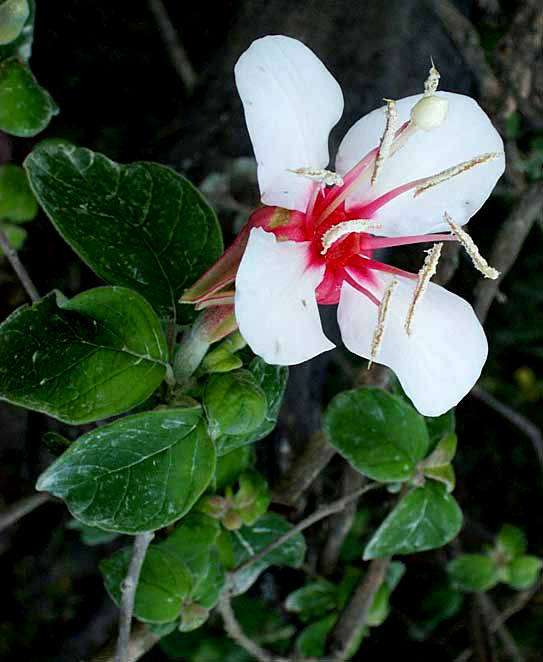Excerpts from Jim Conrad's
Naturalist Newsletter
from the June 22, 2007 Newsletter issued from Sierra Gorda Biosphere Reserve, QUERÉTARO, MÉXICO
EVENING-PRIMROSE TREES
Descending the steep slope from the juniper and pine uplands into the hot, arid valley, the vegetation continually changed. One small tree species, growing to about 15 feet tall, was more attention-getting than all others because the trees were decked with teacup-size flowers that when fresh were pure white but after pollination turned deep, crimson -- so that every tree bore both white and red blossoms. You can see a white flower just beginning to change to red below:

I couldn't imagine what magical tree this was but the moment I got close enough to see the blossoms' structure it was apparent what family the species belonged to: With an inferior ovary, four petals, eight stamens with big anthers affixed to their filaments at their middles, and long, fleshy sepals swooped back along the pedicles, the species had to be in the Evening Primrose Family. Though you don't think of members of that family as being trees, basically here was a tree evening-primrose. It was HAUYA ELEGANS, the "elegans" of course meaning "elegant."
I figured that such a pretty and unusual tree obviously adapted to droughty conditions would be much represented on the Internet as a widely planted ornamental. However, all I could find about it was some obscure references to its being collected here and there, with no indication that it's being planted anywhere. I can't even find an English or Spanish name for it, which is unusual. Have I stumbled upon a plant just waiting to be discovered by horticulturalists? Imagine how homeowners in droughty areas would jump at a small tree abundantly producing both red and white, large flowers!